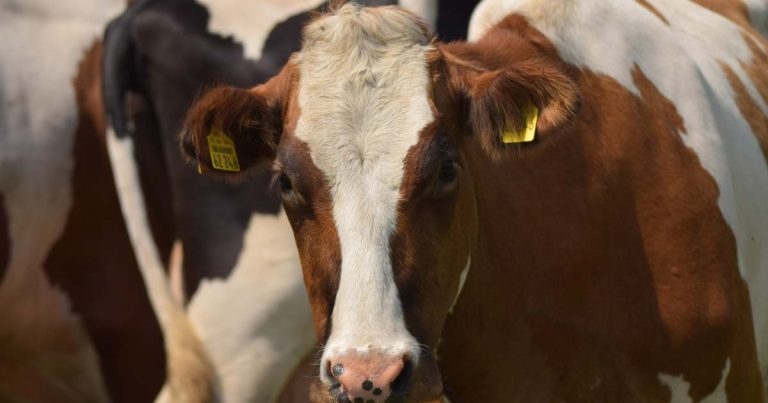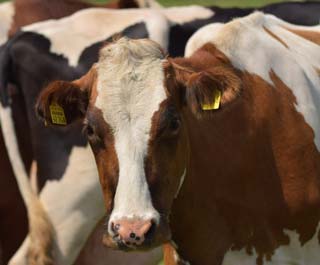19 Dec 2016
Roger Evans reflects on a week where the TB “black cloud” settles over the farm, and he questions both the precautions in place as well as actions to be taken.

Roger reflects on a week where the TB "black cloud" settled over the farm.
Looking back at a week on the farm – in the midst of a TB storm.

Monday: There’s more than 30 dry cows and big heifers out at grass more than two miles away. They are not pleased at being disturbed. They are at the stage in their lives where all they have to do is eat grass, lie down
and flatulate.
They are not pleased at being chased down various lanes into a building where they can be loaded into a trailer and taken home to be tested. Because they are not pleased, they have “attitude”, and because the building we are using is not designed for loading cattle, and we can only get four at a time in the trailer, this operation takes two people nearly all day. These cattle all have to be shut in until they can go back out to grass at the end of the week, so someone else has to go and get a load of silage bales with to feed them with.
There are still 25 yearling heifers on that land and we contrive a holding pen out of big square bales in the same building and get an old crush out of the nettles so we can test them there.
Tuesday: The vet comes to do the injecting. Our usual vet doesn’t do our testing anymore, so we never really know who is going to turn up.
The consensus, among all the staff, is he is a good testing vet and if testing vets were judged on a five-star rating, he would get all of those five stars.
We are finished by late morning. The rest of the day is spent doing the jobs we didn’t have time for yesterday – because we were moving cattle.
Wednesday and Thursday: We go back to being farmers for two days, except we need another load of silage bales, because all the others have been eaten.
Friday: It’s an early start to read the test results. All goes quite smoothly, as you would expect with a five-star testing vet. There’s a bit of a blip when one of the young heifers gets out of the crush before she is “read” and slips over a neighbour’s garden fence and does a lap of honour around their solar panels.
There are 15 blips really, because we had 14 reactors. I’m still in shock about it – I honestly thought we would go clear. Of course, lots of farmers have had very similar outcomes, and you commiserate with them, but until it happens to you, there’s no way of knowing just how bad it feels.
This comes on top of a life preoccupied with trying to juggle finances, and trying to survive on a milk price similar to that in the 1990s.
When we started on this TB journey, about two months ago, when just one in-calf heifer failed, I had a visit from a vet. He told me he was able to identify the TB strain that had caused the problem and he was more than 90 per cent sure the strain came from wildlife.
As you know, professionals never give a 100 per cent opinion, that’s why they have such uncertain lives, but what he was really saying was he was very certain wildlife was the cause.
He was also very careful about which “b” words he was using. He was quite at ease saying things such as “it’s a bit of a bugger”, but he avoided saying, “it’s badgers”.
He gave plenty of biosecurity advice, such as raising all our drinking and feeding troughs to more than a metre high, so although he was at great pains to avoid the word “badger”, we got his drift. We won’t be raising any troughs. As long as our cattle go out to grass, there’s no point, until someone discovers a way of raising the grass a metre – which is a similarly ridiculous idea.
How do I feel? I feel angry politicians have paid so much heed to vocal minority groups they have allowed such a serious issue to get so far out of hand. I feel angry the media, in general, give so much coverage to those minority groups, especially as most of them are driven by a vegan agenda – more concerned to see an end to livestock farming than their concerns for wildlife.
I’m frustrated because there is absolutely nothing I can do between now and my next 60-day test to prevent 14, 28 or even more animals testing positive.
I’m scared if the problem persists for a long period, whether we will be able to farm our way through it.
Further roll out of cull areas is to be welcomed, but is it too little, too late? Is it a bit like putting a new catch into the stable to see if the horse is still there?
I’ve always thought you shouldn’t criticise a course of action unless you have a better idea. A lot of farmers would welcome removal of the protected status for badgers for 12 months, so populations could be reduced.
I certainly think the new cull areas should have been rolled out even further (up around here, for example).
The present cull policy does seem to be having an effect, but all they are doing is chasing the problem. Why not take a geographical leap, get well in front of it and start working back?
Am I angry and bitter about the situation? You bet I am.